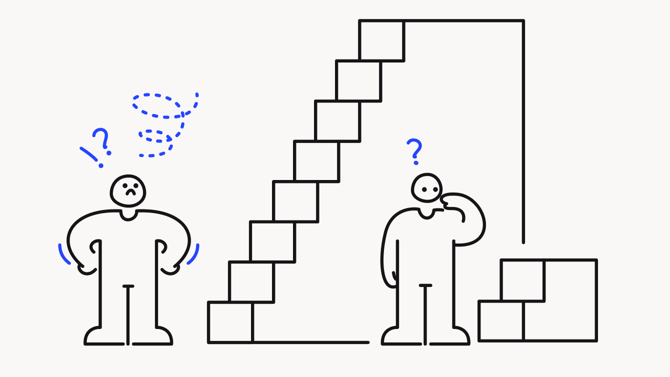“Corporate training is cost-effective because employees become more productive!”
While this is true, how do you assess employee productivity? Unlike other indicators, it is difficult to measure something that seems so intangible.
We wrongly assume that being productive is putting in many hours in a work day. There are other employee productivity indicators that you should consider for your business, and that is what we will be looking at in this article.
We’ll even show you a method to measure employee productivity!
Exclusive online summit
·
May 23 2024
Moments that matter: how to seed great work
What's in this article
1. What is employee productivity?
Employee productivity is the efficiency with which your staff transform their effort into output. This output should be your company's value proposition. It is calculated by dividing the total output by the work required to produce it.
Does being productive really mean working 8 hours in a day? No, it doesn’t.
This is obvious, and you’ve probably noticed it with you or your employees: it’s not because you’ve put in the hours that the work is done, let alone well done.
At Workleap LMS, we like talking about employee productivity, and we’ve found some definitions we’d like to share:
- The ses.webclass website states: “Productivity is a relationship between the production of goods and services, and the means that make it possible.”
- The La Tranchée website offers this definition of productivity : “Productivity yields value.”
An Instagram mini-poll with entrepreneurs found these definitions of productivity :
- The efficiency with which the production or task is accomplished
- Performing the right tasks efficiently and sustainably, in the long run
- Working better towards your goals, through more impactful actions
Above all, productivity is reflected in the value provided to the company.
In the case of a business, this would be accomplished by employees or teams.
Why measure your employee productivity?
We’ve just established that productivity is creating value by working efficiently.
So measuring productivity in your organization allows you to identify ways to increase your business value and make it grow.
This is a crucial point to address during your annual employee evaluation:
- Could the employee perform more tasks by working differently?
- Are they comfortable with their work?
- Do they have any ideas for improvement?
- etc.
You can also do a skill gap analysis in order to assess employee productivity within your company.
2. Employee productivity indicators to monitor
Remember that productivity is not defined by the numbers of hours worked. You could start by identifying a task list (not hours!) you could use as a comparator for each position in your company.
In doing so, you could consider :
- What is being done elsewhere
- What was achieved by former teams
- What is the average for current employees in the same position
Once you have the task list for each position, you can look at the bigger, long-term picture.
It is important to have a well-defined, clear, overall goal, either organizational or result-oriented:
- What does the company aim to accomplish?
- What is the timeline?
- What are the tasks that would help you to get closer to your goals?
Break it down into smaller objectives that you could distribute to each team or department.
This will allow you to see how the teams contribute to the company’s success and how they do it, through these productivity indicators.
Present and absent employee rates
Let’s address two other indicators you can use: present and absent employee rates.
Why these two?
Well, a high absentee rate could mean that employees are experiencing stress, or are not happy at work, and need to take time off, etc.
One or more absentees will lead to work tasks being done less quickly, and to less value being brought to the company.
Remember that productivity is directly linked to value creation!
How can presenteeism be a problem?
If an employee goes back to work while sick, they will not only not be comfortable or really motivated, they could also risk contaminating others.
Therefore, remember that employees are the heart of an organization and you must take care of their physical and mental health in order to ensure their productivity.
3. How do you measure employee productivity?
According to La Tranchée, productivity is equivalent to the generation of value for the company (V).
It is the result of 4 factors:
- Idea quality (I)
- Production means (M)
- Expertise (E)
- Time (T)
So the formula for calculating productivity is: V = I * M * E * T
Practically, how can you assess this data?
First of all, it is clear that if one of these values is 0 (as in a very, very bad idea, for example), the formula will not work.
It is necessary to find a balance between:
- A good idea: does it generate more revenue or less expenses?
- An efficient production means: does this software or material save time? It is easy to use? etc.
- Employee expertise: hiring beginners does not yield the same value as hiring seniors (but you can always train new recruits)
- Time spent on the job (if you need 10 hours on a task that takes 5 hours on average, something is not right)
It is up to you to define the criteria and their value, according to the context of your company.
Obviously, the formula to assess employee productivity is an indicator meant to detect abnormal situations. You should not use it to pressure your employees!
4. Learning management systems can improve team productivity
A learning management system allows you to offer in-house training and therefore increase your company value, at a lower cost.
Everyone has something to learn, beginners and seniors alike!
Instead of going to see a teammate and disrupting them in their task (it takes on average fifteen minutes to get back to a task, once interrupted), an employee could find the answer by themselves. Going to a colleague will only be an option if it is really necessary.
Furthermore, when opening up a new position, the hiring process is costly and time-consuming.
You could recruit internally and use a learning management system in order to train employees already working within your organization. This way, you know for sure that the person likes the work environment and already knows how the company operates.
They could even become a super ambassador for your employer brand!
Remember that it is very important to choose the right learning management system in order to improve productivity!
Finally, here is quote by Peter Drucker that could guide you throughout the steps towards improving your company productivity:
“Nothing is more futile than effectively accomplishing a useless task.”
So what will your next steps be to improve employee productivity in your company?
Discover, manage, and grow your team’s skills to unleash their potential and retain your rising stars.




